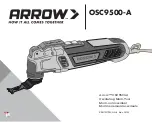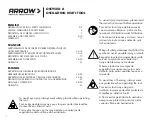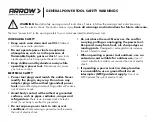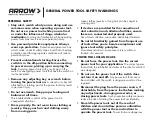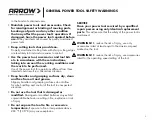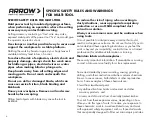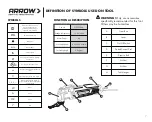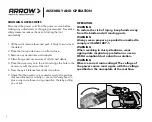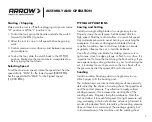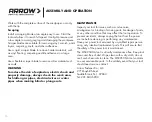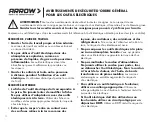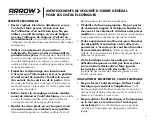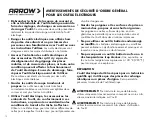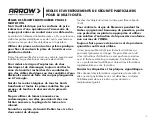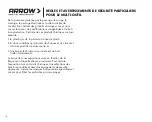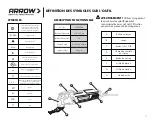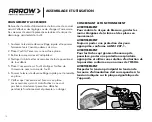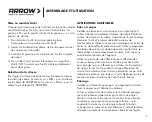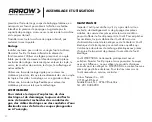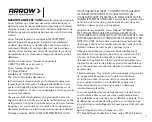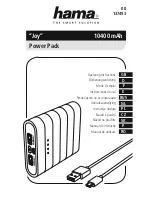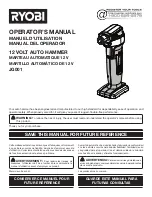
Hold power tool by insulated gripping surfaces,
when performing an operation where the cutting
accessory may contact hidden wiring.
Cutting accessory contacting a “live” wire may make
exposed metal parts of the power tool “live” and could give
the operator an electric shock.
Use clamps or another practical way to secure and
support the workpiece to a stable platform.
Holding the work by hand or against your body leaves it
unstable and may lead to loss of control.
To reduce the risk of explosion, electric shock and
property damage, always check the work area
for hidden gas pipes, electrical wires or water
pipes when making blind or plunge cuts.
Keep hands away from all cutting edges and
moving parts. Do not reach underneath the
workpiece.
Do not use dull or damaged blade,
which can
cause excessive friction, blade binding and
kickback.
Know your workpiece. Remove nail and screw
heads before scraping.
Hitting hard objects with blade may cause the tool to
kickback.
SPECIFIC SAFETY RULES FOR MULTI-TOOL
To reduce the risk of injury, when working in
dusty situations, wear appropriate respiratory
protection or use an OSHA compliant dust
extraction solution.
Always use common sense and be cautious when
using tools.
It is not possible to anticipate every situation that could
result in a dangerous outcome. Do not use this tool if you do
not understand these operating instructions or you feel the
work is beyond your capability; contact Arrow or a trained
professional for additional information or training.
Maintain labels and nameplates.
These carry important information. If unreadable or missing,
contact a Arrow service facility for a free replacement.
Some dust created by power sanding, sawing, grinding,
drilling, and other construction activities contains chemicals
known to cause cancer, birth defects or other reproductive
harm. Some examples of these chemicals are:
• lead from lead-based paint
• crystalline silica from bricks and cement and other
masonry products, and
• arsenic and chromium from chemically-treated lumber.
Your risk from these exposures varies, depending on how
often you do this type of work. To reduce your exposure to
these chemicals: work in a well ventilated area, and work
with approved safety equipment, such as those dust masks
that are specially designed to filter out microscopic particles.
SPECIFIC SAFETY RULES AND WARNINGS
FOR MULTI-TOOL
6

